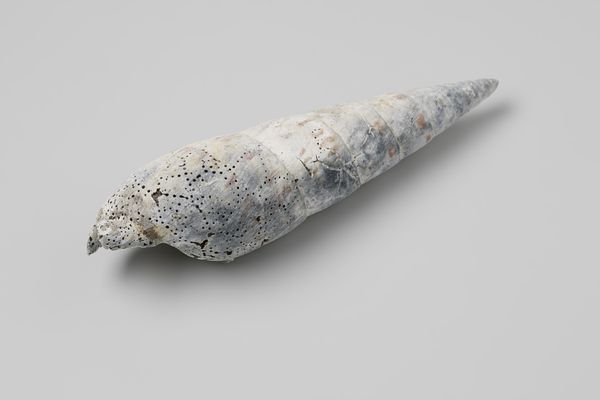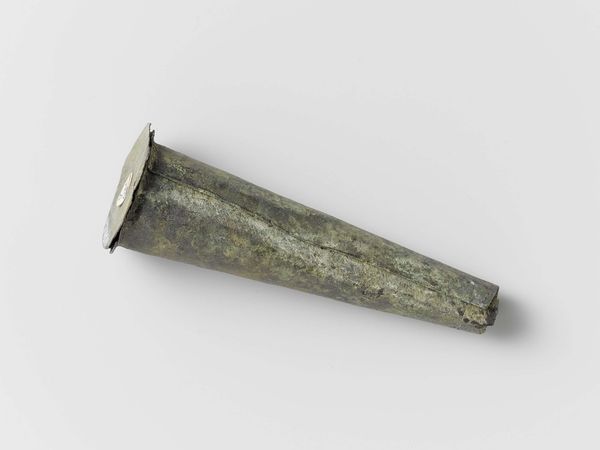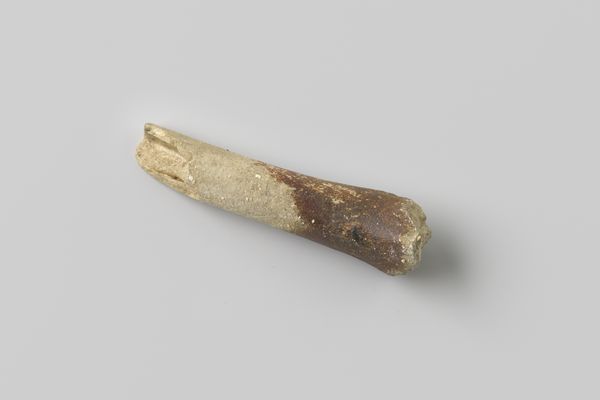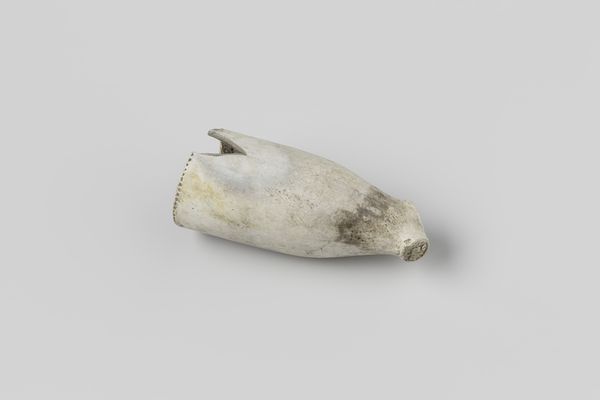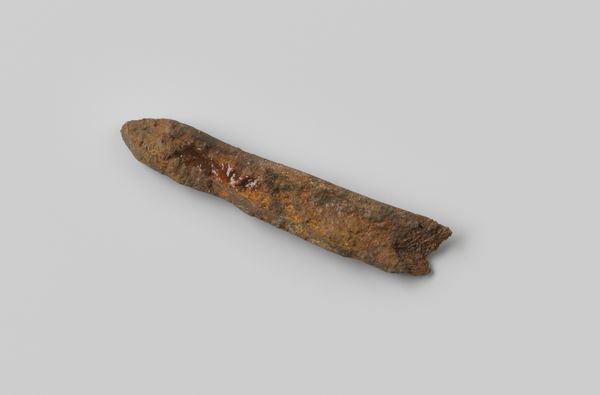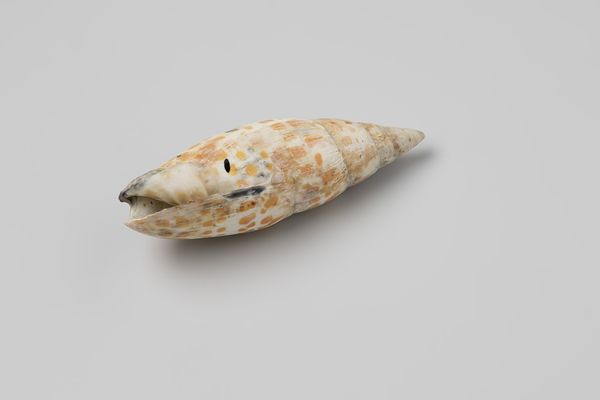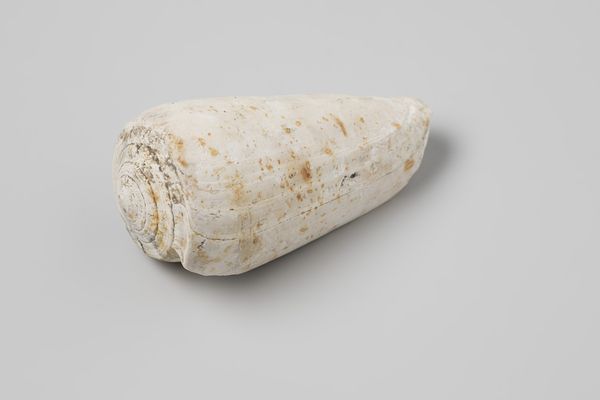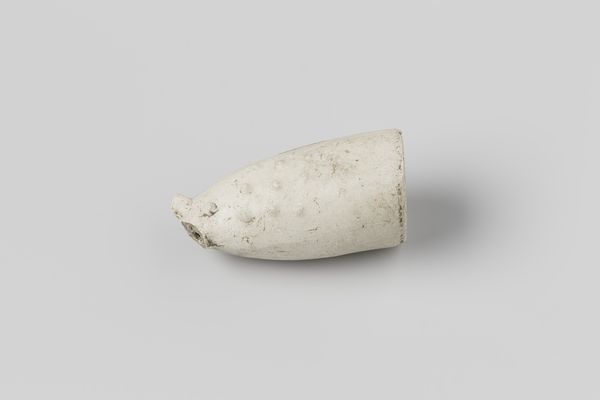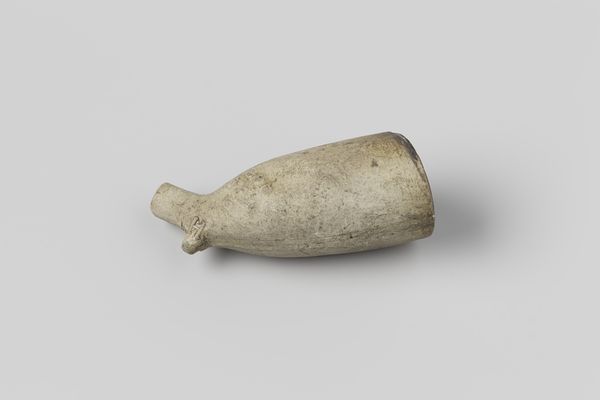
Terebra subulata shell from the wreck of the Dutch East India ship Witte Leeuw before 1613
0:00
0:00
found-object, photography
#
studio photography
#
product photograph merchandise
#
product studio photography
#
product shot
#
3d printed part
#
found-object
#
photography
#
product design photgrpaphy
#
geometric
#
product mock up
#
graphic design product photography
#
product photography
#
nature closeup
Dimensions: length 9.0 cm, diameter 1.5 cm
Copyright: Rijks Museum: Open Domain
This Terebra subulata shell was recovered from the wreck of the Dutch East India ship, the Witte Leeuw, which sank in 1613. The ship was lost during a conflict with the Portuguese off the coast of St. Helena. Considered a luxury item, shells were part of the cargo being transported from the East to Europe. They were a popular trade item and reflected the exotic tastes of the wealthy. This particular shell tells a story of global trade, colonial expansion, and the human desire for luxury and beauty. It invites us to consider the human cost of these desires. What did it mean to profit from objects like this? What were the unseen impacts on the lives of those who lived in the lands from which it was taken? The shell serves as a stark reminder of the complex and often troubling legacies of the colonial past.
Comments
No comments
Be the first to comment and join the conversation on the ultimate creative platform.

